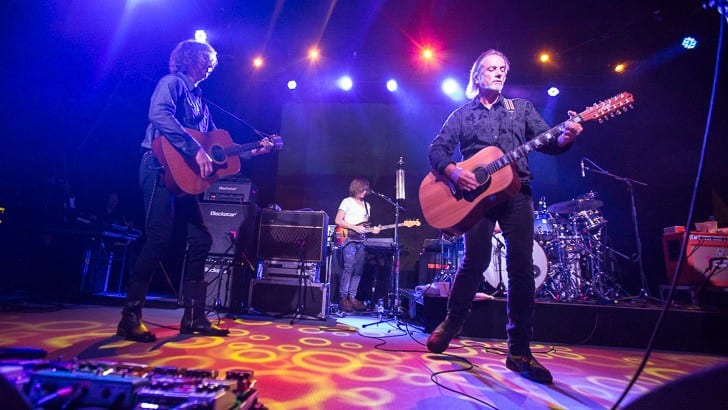
One hit wonder. Talk about passive-aggressive tags. But the nickname certainly applies to some bands who suddenly become the flavor of the month, only to burn brightly and quickly. Ask the average music fan about The Church and you’ll get some nods when “Under The Milky Way” comes up. Ask your average Church fan about the band and you’ll more than likely get a stirring defense about how they are the best band ever to come from Australia, certainly in the conversation involving AC/DC, Nick Cave, The Saints, The Go-Betweens and a handful of others.
The thought of a thirty-plus year music career being summed up via a four minute song is laughable, no matter how catchy and pervasive that song happened to be. And yet, “Under The Milky Way” still resonates over generations. Ask yourself: Would Donnie Darko be the same movie without its inclusion?
Further/Deeper is the latest salvo into the world for the band, their 17th record of original songs since the exuberant and bright-eyed debut Of Skins And Hearts made its way into the world in 1981. It probably wasn’t a coincidence that “Is This Where You Live” kicked things off to the sold-out room at The Sincliar last Thursday. It acted as a reminder of their beginnings, but not exclusively so. The new record has some excellent songs, and a half-dozen found their way into the set list of 18 played, including the brooding “Toy Head” and the uplifting tension of “Miami”, the latter of which closed their regular set.
The last time I saw them was 2011, when the quartet (filled out with a fifth member for the live show, augmenting their sound with guitars and keyboards) pulled of a fairly prodigious set of three complete records, front to back. That well-worn gambit didn’t return, but a key song from Priest=Aura remained. “The Disillusionist” is the critical linchpin, a cautionary and possibly self-referential tale about the shallowness of carving out an existence via the music industry. The fifth member allowed Kilbey to ditch his bass and roam the stage, gesticulating like a Shakespearean actor.
Lush harmonies, a propulsive rhythm section, and a slight Roger McGuinn fixation remain as key ingredients, as was the presence of several 12 string guitars on stage throughout the night. The key difference was the absence of Marty Willson-Piper, who comes as close to being an original member as one can (in a Richard Starkey manner chronologically speaking, but really more of a George Harrison manner in regards to musical contribution). Ian Haug did a fine job, but the general bonhomie that Willson-Piper brought to the show, along with his limited but excellent songbook, were missed. You can read Kilbey’s thoughts about this via the blog entry he published the day of the show. Peter Koppes remains, though even he as well as Marty have drifted in and out of the lineup over the course of the band’s history. He’s really quite underrated as a guitarist, with flawless technique and feel. “Myrrh” was a shining example of this, the paisley patterns floating over Kilbey’s insistent bass line until they explode into bright splashes of harmonics, later giving way to a cloud of e-bow distortion.
So where does the band go from here? Onward, like a shark that can’t stop swimming. Kilbey’s content with the knowledge that his radio days have come and gone. Of course the trascendent “Milky Way” was played, but he also glibly prefaced “Metropolis” as the last time that the band had darkened the doorway of commercial radio. Which is fine as long as they keep producing vital material. And if the show at The Sinclair was any indicator, there are no signs of slowing down yet.
Primarily based in Boston, Massachusetts, Tim Bugbee is no stranger to traveling throughout the country or overseas to capture the best live music photos.

